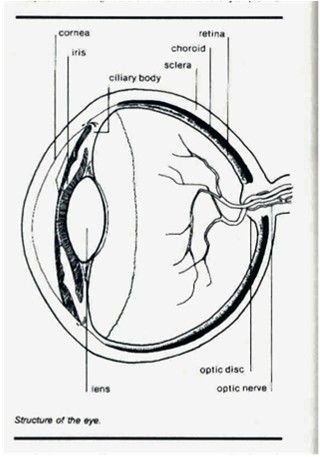|
KM Shelties Breeders of Show & Pet Shetland Sheepdogs (Shelties) In Michigan. |
 |
KM Shelties Home / News / Puppy Page / About Us / Testimonials
| Home/News Puppy Page About Us Our Dogs Testimonials Photo Gallery 2012 Heritage 1995-2011 Handlers Sheltie Info Fox Trotters Contact Us |
Welcome to Sheltie information page. You will find below. Color, SHETLAND SHEEPDOG alias "The Sheltie"; EYE DEFECTS; AKC Shetland sheepdog StandardLet us know if you would like to see some more info listed below. As we find some we might ad it also. So please check back.
Member of ShetlandSheepdog Association American Kennel Club Shetland Sheepdog Breeder of Merit- The Heart of the AKC |
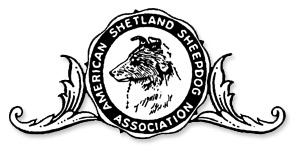 |
||||||||
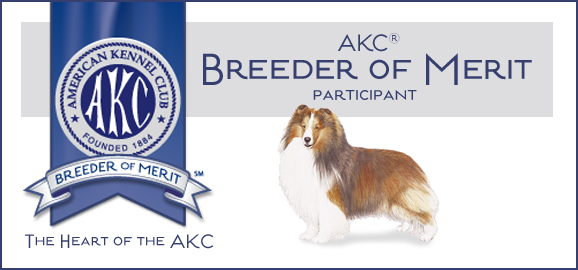 |
SHETLAND SHEEPDOG alias "The Sheltie" Shelties were the farm dog whose work place was the unfriendly terrain of the Shetland Islands of Scotland. To this day, the Sheltie displays a strong sense of boundary, a legacy no doubt from these early working days when to overstep the line meant a fall from a rocky cliff into the cruel frigid sea. In 1906 the Sheltie made it's debute at the Crufts Dog Show under the name "Shetland Collie". But Collie Breeders objected (although Collies ARE an ancestor of the breed), and the name was changed to "Shetland Sheepdog". The breed has become very popular as a family pet, suited to almost any size home. It's exercise needs are easily satisfied with a daily walk, and a regular thorough brushing satisfies grooming needs. The breed measures 13 to 16 inches at the shoulder; the double coat is dense, and may be Black, Blue Merle or Sable marked with white and/or tan highlights and points. Bi-colored dogs do not have the tan highlights. There are several more color combinations...ask your Breeder for more information about this. The Sheltie has a strong desire to please, and excels in obedience work. So you want to own a Shetland Sheepdog? The Sheltie is a "watch" dog, not a guard dog; nor is it visually frightening. It will bark at intruders, but after giving warning, may either retreat or escort them though your house. Suggested reference "Sheltie Talk" by Betty Jo McKinney& Barbara Rieseberg, published by Alpine Publications. |
|||||||||
|
Dear Dog Lover, As a dog breeder, animal health is my top priority. That�s why I enthusiastically recommend NuVet immune system builder to all of my customers. Simply put, it is the best nutritional supplement available today. Proudly recommend- NuVet Hundreds of thousands of dogs and cats are using NuVet to protect against most ailments (from back yard pesticides, pet food allergies and hormones, toxic formaldehyde in furniture and carpeting, ailments transmitted from dog parks and the vet�s office, etc), while maintaining a beautiful skin and coat.
This is not just a vitamin. It's an immune system builder with a precise balance of vitamins, minerals, omega fatty acids, amino acids and high-potency antioxidants. That�s why it works so well through all three stages of a dogs life. P For puppies - It fills the immunity gap all puppies experience. Shortly after birth maternal antibody effectiveness is greatly reduced. By 8 weeks your puppy�s immune system is at a vulnerable point. Once in their new home, the immune system is weakened by the stress of adoption and exposure to novel bacteria and viruses in their environment. This is also when the vaccine series is started. Vaccines are only effective if the immune system can respond properly. Starting NuVet Plus now is important to helping your puppy grow into a healthy adult. P For dogs in their prime - it improves the luster of their skin and coat while protecting against allergies, skin and coat problems, staining from tears, digestive problems, etc. P For older dogs - it helps protect against, tumors, premature aging, cataracts, heart conditions, diabetes and many types of cancer, while extending the life and improving the vitality of many dogs. I highly recommend NuVet Plus to keep your pet on the path to perfect health! It�s not available in stores, and is only available to the general public with an order code from an authorized pet professional. or your convenience, you may order directly from the manufacturer by calling 800-474-7044 and using Order Code: 88225, or ordering online at www.nuvet.com/88225 . You can also save an additional 15% and assure you never run out of NuVet by choosing the AutoShip option at check out. To the long life and health of your dog! Kim Pike |
||||||||||
AKC MEET THE BREEDS: Shetland SheepdogThe Shetland Sheepdog, or "Sheltie" as it is commonly called, is essentially a working Collie in miniature. A rough-coated, longhaired working dog, he is alert, intensely loyal and highly trainable and is known as a devoted, docile dog with a keen sense of intelligence and understanding. Agile and sturdy, the Sheltie is one of the most successful obedience breeds, but also excels in agility, herding and conformation. The coat can be black, blue merle or sable, marked with varying amounts of white and/or tan. A Look Back Right Breed for You?
|
EYE DEFECTS Progressive Retinal Atrophy
|
|||||||||
| "The Color" I am putting up some colors like the "Sheltie Talk" book shows And of course using my own dogs to show coat colors. |
||||||||||
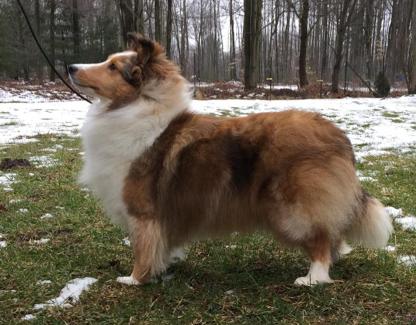 |
Sable
Misunderstandings of the color tri. I have had so many folks ask for a Tri but what they really wanted was a "Mahogany" Otherwise know as a Tri factored Sable. Mahogany Pup left side of picture or shaded Sable. remember Sables can be many shade or colors |
|
||||||||
 |
Tri Pups pictured left is example of a true Tri pup |
.jpg) |
||||||||
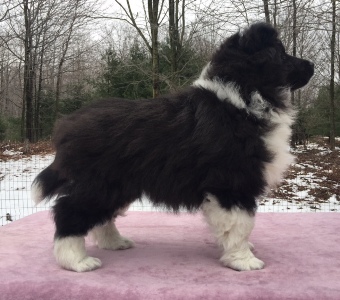 |
Bi-Black only 2 colors Black and white. | 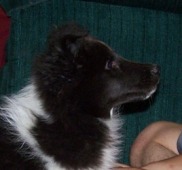 |
||||||||
 |
Bi-Blue Merle - Equal to Bi-Black but merle in black coat. | .jpeg) |
||||||||
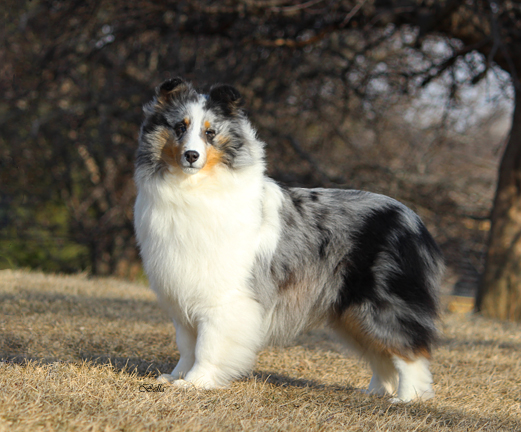 |
|
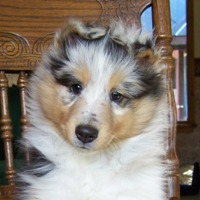 |
||||||||
| Cryptic Blue merle- Blue Merle but with limited grey in coat for merle showing. | 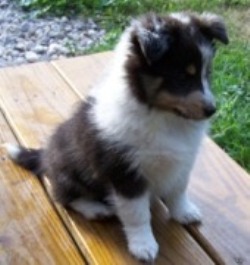 |
|||||||||
| Sable/ Merle or some say Red Merle | 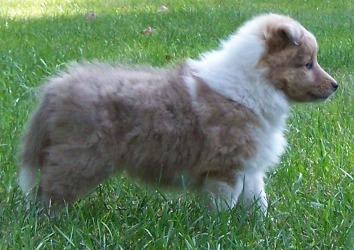 |
|||||||||
Shetland Sheepdog Breed StandardHerding GroupGeneral Appearance Size, Proportion, Substance Disqualifications-- Heights below or above the desired size range are to be disqualified from the show ring. In overall appearance, the body should appear moderately long as measured from shoulder joint to ischium (rearmost extremity of the pelvic bone), but much of this length is actually due to the proper angulation and breadth of the shoulder and hindquarter, as the back itself should be comparatively short. Head Expression-- Contours and chiseling of the head, the shape, set and use of ears, the placement, shape and color of the eyes combine to produce expression. Normally the expression should be alert, gentle, intelligent and questioning. Toward strangers the eyes should show watchfulness and reserve, but no fear. Eyes medium size with dark, almond-shaped rims, set somewhat obliquely in skull. Color must be dark, with blue or merle eyes permissible in blue merles only. Faults-- Light, round, large or too small. Prominent haws. Ears small and flexible, placed high, carried three-fourths erect, with tips breaking forward. When in repose the ears fold lengthwise and are thrown back into the frill. Faults-- Set too low. Hound, prick, bat, twisted ears. Leather too thick or too thin. Skull and Muzzle Top of skull should be flat, showing no prominence at nuchal crest (the top of the occiput). Cheeks should be flat and should merge smoothly into a well-rounded muzzle. Skull and muzzle should be of equal length, balance point being inner corner of eye. In profile the top line of skull should parallel the top line of muzzle, but on a higher plane due to the presence of a slight but definite stop. Jaws clean and powerful. The deep, well-developed underjaw, rounded at chin, should extend to base of nostril. Nose must be black. Lips tight. Upper and lower lips must meet and fit smoothly together all the way around. Teeth level and evenly spaced. Scissors bite. Faults-- Two-angled head. Too prominent stop, or no stop. Overfill below, between, or above eyes. Prominent nuchal crest. Domed skull. Prominent cheekbones. Snipy muzzle. Short, receding, or shallow underjaw, lacking breadth and depth. Overshot or undershot, missing or crooked teeth. Teeth visible when mouth is closed. Neck, Topline, Body Back should be level and strongly muscled. Chest should be deep, the brisket reaching to point of elbow. The ribs should be well sprung, but flattened at their lower half to allow free play of the foreleg and shoulder. Abdomen moderately tucked up. Faults-- Back too long, too short, swayed or roached. Barrel ribs. Slab-side. Chest narrow and/or too shallow. There should be a slight arch at the loins, and the croup should slope gradually to the rear. The hipbone (pelvis) should be set at a 30-degree angle to the spine. Faults-- Croup higher than withers. Croup too straight or too steep. The tail should be sufficiently long so that when it is laid along the back edge of the hind legs the last vertebra will reach the hock joint. Carriage of tail at rest is straight down or in a slight upward curve. When the dog is alert the tail is normally lifted, but it should not be curved forward over the back. Faults-- Too short. Twisted at end. Forequarters Hindquarters Coat Color Gait Faults-- Stiff, short steps, with a choppy, jerky movement. Mincing steps, with a hopping up and down, or a balancing of weight from side to side (often erroneously admired as a "dancing gait" but permissible in young puppies). Lifting of front feet in hackney-like action, resulting in loss of speed and energy. Pacing gait. Temperament |
||||||||||
| NuVet Dog immune system builder | ||||||||||
| NuVet Cat immune system builder | ||||||||||
|
Welcome to KM Shelties breeders of Quality AKC Standard shelties - Selective breeding in the works. |
|||
| Navigate this site:
Navigate this site: Testimonials |
Proudly recommend- NuVet
Dear Dog Lover, As a dog breeder, animal health is my top priority. That's why I enthusiastically recommend NuVet immune system builder to all of my customers. Simply put, it is the best nutritional supplement available today. _______________________________________________________ Selective Sheltie Studs bred by or used in breeding program: MBISS CH Blue Heavens Dom Perignon GCH. Blue Heavens Sizzling Hot U-CH. KM Prince Hajji Baba RE "Hajji" BISS Grd Am/Can Ch Belmark Shakedown ROM CH. Apple Acres Short Circuit "Breaker"
|
Hundreds of thousands of dogs and cats are using NuVet to protect against most ailments (from back yard pesticides, pet food allergies and hormones, toxic formaldehyde in furniture and carpeting, ailments transmitted from dog parks and the vet's office, etc), while maintaining a beautiful skin and coat.
This is not just a vitamin. It's an immune system builder with a precise balance of vitamins, minerals, omega fatty acids, amino acids and high-potency antioxidants. That's why it works so well through all three stages of a dog's life. P For puppies - It fills the immunity gap all puppies experience. Shortly after birth maternal antibody effectiveness is greatly reduced. By 8 weeks your puppy's immune system is at a vulnerable point. Once in their new home, the immune system is weakened by the stress of adoption and exposure to novel bacteria and viruses in their environment. This is also when the vaccine series is started. Vaccines are only effective if the immune system can respond properly. Starting NuVet Plus now is important to helping your puppy grow into a healthy adult. P For dogs in their prime - it improves the luster of their skin and coat while protecting against allergies, skin and coat problems, staining from tears, digestive problems, etc. P For older dogs - it helps protect against, tumors, premature aging, cataracts, heart conditions, diabetes and many types of cancer, while extending the life and improving the vitality of many dogs.
I highly recommend NuVet Plus to keep your pet on the path to perfect health! It�s not available in stores, and is only available to the general public with an order code from an authorized pet professional. For your convenience, you may order directly from the manufacturer by calling 800-474-7044 and using Order Code: 88225, or ordering online at www.nuvet.com/88225 . You can also save an additional 15% and assure you never run out of NuVet by choosing the AutoShip option at check out. To the long life and health of your dog! Kim Pike |
|
|
|
|||
|
Quality Missouri Foxtrotters in Illinois Our goal is to raise the finest quality animals with great characteristics and bloodlines, so when one is sold we are still proud to have raised them
|
Becky Johnson - Beckon Shelties I have had the great pleasure of Handling Conformation Shelties for numerous clients such as Lynnlea, Belmark, Adair, Abbotsford, KM Shelties, Attridge, Skyehaven, Trilliant, Cameo and many others. Assisted by Janet Nurse If you wish to have your dog added to the Beckon crew in the near future, please contact me by telephone at 815-791-9110 to ascertain availability of services.
|
||
|
|
||
|
Link/Directory / KM Shelties & KM Fox Trotters / Junior Handlers / Contact us [ Puppy ] [ About Us ] [ Breeding Stock ] [ Photo Gallery 2009 ] [ Testimonials ] [ Handlers ] [ Heritage 1995-2011 ] [ Sheltie Info ] [ KM Fox Trotters ] [ Contact us ] |
||
